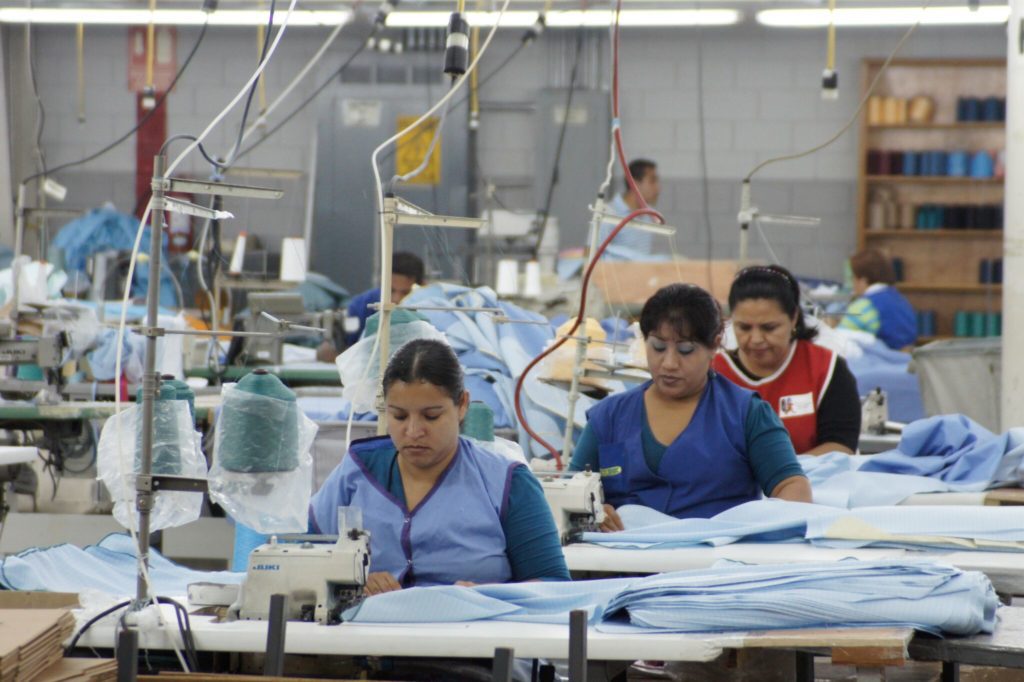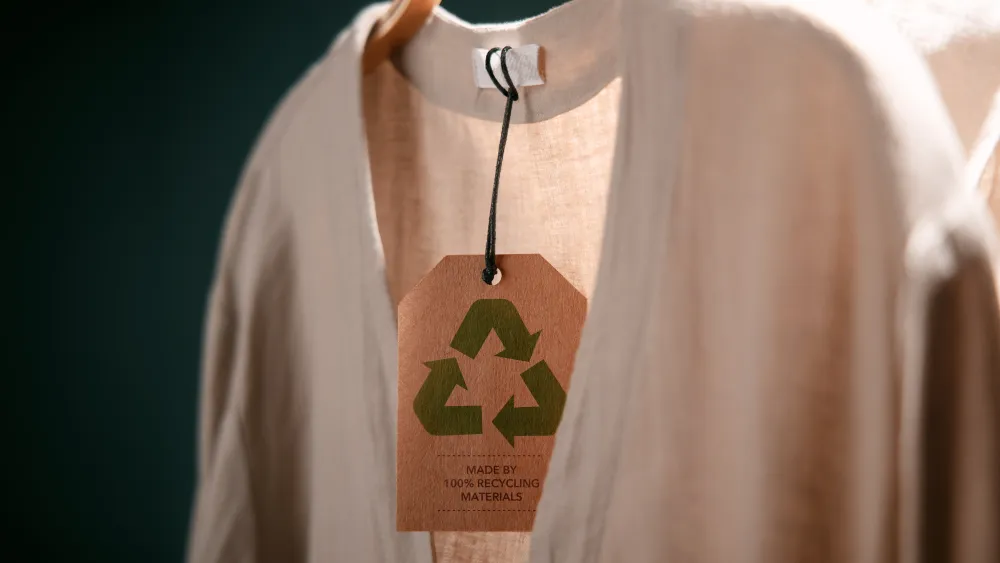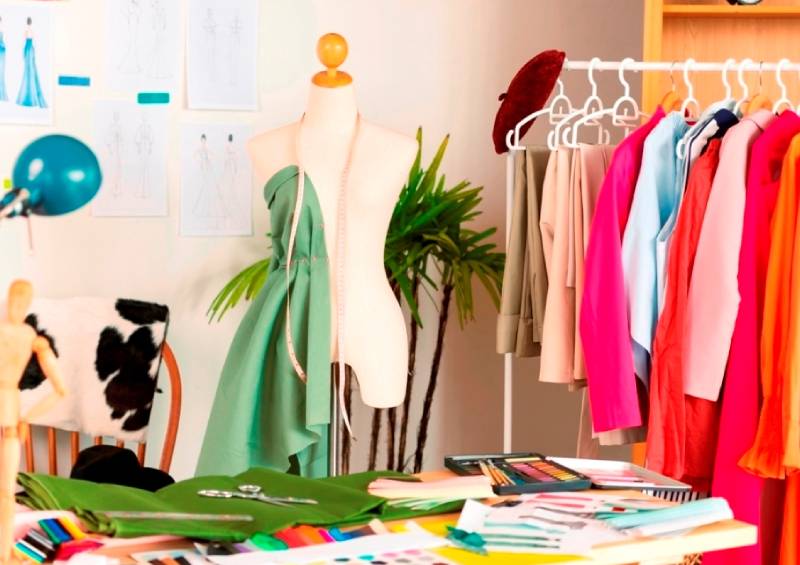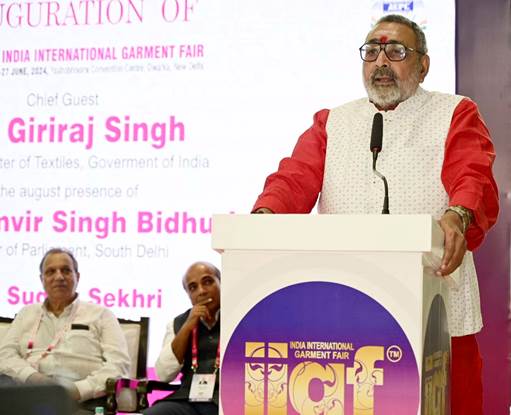FW
Owing to the reforms implemented by President Islam Karimov, the Fergana province in eastern Uzbekistan is developing as a textile cluster. Production and exports from the region has risen. The Fergana province is putting in efforts to attract foreign investments by modernising its industries and creating favourable conditions, which has led to a rise in industrial production by about 7.9 per cent over last year. In all, 380 new production facilities have been commissioned in various sectors, including the light industry, in the framework of the government’s policy.
At present, there are 117 enterprises in the Fergana region which have been set up in collaboration with foreign investors. This include a joint venture Indorama Kokand Textile in Kokand city, which has an annual capacity to produce 7,000 tons of high-quality yarn, which is then exported to over 10 countries, including Bangladesh, Belgium, Spain, France, Italy, Brazil and Argentina. Textile enterprises like the Fargona Turon Textiles, Bulut Tekstil, Margilon Osie Tex and Besharik Tekstil have been reporting more than projected export quantities in the last few months.
Readymade garment (RMG) owners in Bangladesh have tagged three demands with the implementation of the wage board's proposed minimum wage structure for garment workers. The demands are: re-fixation of source tax at 0.2 per cent, introduction of a 3.0 per cent cash incentive to traditional markets like EU, US and Canada and a special exchange rate against US dollar for readymade garment exports.
The leaders of Bangladesh Garment Manufacturers and Exporters Association (BGMEA) and Bangladesh Knitwear Manufacturers and Exporters Association (BKMEA) raised the demands in a meeting with the labour minister Rajiuddin Ahmed Raju.
BGMEA President Atiqul Islam and other office bearers, former presidents Abdus Salam Murshedy, Annisul Huq, former vice president Siddiqur Rahman, BKMEA President AKM Salim Osman and office bearers, among others, were present at the meeting. The apparel owners put forward their conditional demands for enhancing the industry's affordability to implement the new wage structure under review.
Italian sock knitting machine producer Busi Giovanni has established a marketing and commercial partnership with Filmar a leading Italian cotton yarn spinner based in the Brescia area of Lombardy near to Busi’s own manufacturing facility.
Filmar produces high quality cotton yarns based on the best qualities of cotton grown along the Nile valley of Egypt in its own production facilities in Alexandria. The processes carried out in both of the company’s plants are oriented to achieving excellent quality in finished products.
The main aim of the partnership is sharing of sales leads and the systematic reciprocal recommendation of services provided by the partner company to all common stakeholders worldwide. Under the new partnership Busi is trying to establish a network of non-competing companies with similar business objectives. Michele Castagna, Marketing Manager at Busi comments, “This might be the first step for a project with greater extent, as we are trying to create a network of companies, all belonging to the same hosiery industrial sector and never in competition with each other, with the aim of providing highly reliable products and services to any sock mills in the world researching superior quality productions.”
Since 1958, Busi Giovanni Srl has specialized in the design and construction of single-cylinder machines with rib needles in the dial for the production of high-quality stockings, socks and tights. Today, Busi is recognized worldwide as one of the most inventive producers of machines for high-performance and high-tech socks.
With fluctuating global cotton prices, a drop in consumer spending due to economic slowdown and high inflation, research agency IBISWorld has updated its report on the Global Apparel Manufacturing industry. The study is however optimistic that increasing population and disposable incomes will push up growth of the industry in the next five years.
The report says, after several years of strong revenue growth, the global apparel manufacturing industry suffered weak demand conditions in 2009. As recession hit, demand for high-priced apparels declined in Europe, the US and Japan. While demand for apparels in emerging markets, such as China, continued to grow during this period, it did little to buffer the industry from the effects of the global recession. As a result, revenue dropped 13.8 per cent in 2009 and has declined at an annualized rate of 0.2 per cent over the five years to 2013. IBISWorld estimates that industry revenue will total $577.5 billion (Rs 36,52,110 crores) by the end of the year.
The report suggests that imports are expected to account for 76.2 per cent of demand and exports are expected to account for 75.4 per cent of industry revenue in 2013. Industry participants are continuously shifting manufacturing operations to low-wage countries or sourcing their products from independent contractors to minimize costs. China is the world's primary source of apparels, it accounts for 38.0 per cent of total industry exports. Other emerging countries, including India and Bangladesh, are growing their presence as key manufacturing regions.
www.ibisworld.com
China's decision to import yarn in bulk may elevate cotton prices internationally, a phenomenon anxiously awaited by Pakistan’s cotton farmers selling their stocks on an average basis prices ranging between Rs 3,000 to Rs 3,100 in Sindh and Punjab. China’s cotton production for 2013-14 is estimated at 6.70 million tons as against 7.3 million tons recorded in 2012-13, a decline of 8 per cent. While consumption shows a fall of 3 per cent, it was estimated at 8.04 million tons in 2013-14 as against 8.29 million tons in previous year. Imports by China are estimated at 3.18 million tons in 2013-14 as against 4.43 million tons in 2012-13.
According to the Cotton Review of Pakistan Central Cotton Committee, under the Textile Division of Ministry of Commerce, Sindh has reaped more than 70 per cent of the assessed cotton crop for the year 2013-14. Farmers seem satisfied in terms of Phutti prices. In the meantime, declining trend in international prices has affected seed cotton prices in Pakistan.
Pakistan is likely to produce 11.958 million bales for 2013-14. Production in Punjab stays around 8.70 million bales, followed by 3.150 million bales in Sindh, 0.000433 million bales in Khyber Pakhtunkhwa and 0.108 million bales in Balochistan.
HealthWatch plans to introduce hWear, a revolutionary digital, heart-sensing garment incorporating interwoven textile electrodes for continuous monitoring of hospital quality, 15-lead ECGs. These T-shirt will be demonstrated at the company’s booth during the Medica show in Dusseldorf (Hall 3 booth E20) communicating in real-time to actual smartphone applications.
Designed by textile experts, hWear t-shirts measure the highest quality vital signs without adhesives, gels, or shaving preparations for both men and women. These garments are machine washable and compatible with most cardiac telemetry systems and are CE and FDA registered.
“We are restoring the ‘wear’ into wearable technology,” says Uri Amir, CEO of HealthWatch. “Unlike other products that report only heart rate, our new health wear garment is a true medical device monitoring full 15-lead ECGs along with other physiological vital signals. It will change the future of personal monitoring offering around-the-clock peace of mind to users -- wherever their lifestyle takes them.”
Renowned for its elegant fabrics and bold colours, India has long been associated with apparel fabrics and fashion. This year’s Intertextile Shanghai Apparel fabrics fair brought a piece of this subcontinental charm to Shanghai with the ‘India Pavilion’. Organized by the Cotton Textiles Export Promotion Council of India and the Synthetic & Rayon Textiles Export Promotion Council, there were over 30 exhibitors displaying some of the best that the region offers.
Piyush Chhatbar, Director of cotton print maker Prompt Impex said that although the company was new to the Chinese market, it is looking to test its products in the Chinese and Asian market as well as overseas as buyers from all over the world visit the event.
Proximity is one of the attractive factors that works for India besides there is great variety in Indian exhibitors from colourful cotton fabrics to suit and shirt fabrics for men’s apparel. “We have been regularly visiting Intertextile Shanghai Apparel Fabrics and are confident to find international buyers in the fair,” said Vishal Jain, Director, Rishabh Apparel.
Ashok Panjabi, Director, Tissues Sajavat believes that the market is tough. “We create new trends and designs to suit all markets and it looks like this Indian creativity is here to stay in China.
Despite unfavourable market conditions, Lenzing Group, the world’s leading producer of man-made cellulose fibres, achieved results in line with expectations in the first three quarter of 2013. This can be attributed to the counter measures which are already underway. The consolidated sales amounted to €1,447.0 million, a decline of 7.7 per cent from the comparable level of €1, 567.5 million in the previous year. Consolidated earnings before interest, tax, depreciation and amortization (EBITDA) continued to be at a good level, amounting to €223.8 million in the first nine months of 2013, a drop of 20.5 per cent from the prior-year figure of €281.5 million.
This comprised an EBITDA margin of 15.5 per cent (Q1-3/2012: 18.0 per cent). Earnings before interest and tax (EBIT) in the first nine months of the year fell by 33.0 per cent to €136.4 million.
In the light of the ongoing difficult market situation, Lenzing has decided to proactively implement a massive, far-reaching cost optimization program. The initiative will enable cost savings of €120 million per annum until 2015 as a means of safeguarding Lenzing’s cost leadership on the global market for man-made cellulose fibers. In this way Lenzing is responding to the current difficult market environment, which has led to increasingly fierce price competition.
Exports of pashmina from Nepal, has grown by double digit during the first two months of the current fiscal year that began on July 15 over the same period last year. Nepal’s pashmina exports to countries other than India shot up by 43.9 per cent during the two-month period with Germany, France, Italy, UK and US being the major destinations.
The registration of the chyangra pashmina trademark in 41 countries is one of the reasons for an increase in exports of Nepali pashmina products. Chyangra pashmina of Nepal is relatively expensive than those sourced from other countries, and hence its demand was affected due to economic slowdown in some EU countries.
Pashmina is extracted from the inner coats of the hardy mountain goats, locally known in Nepal as chyangra, which live at an altitude of above 3,000 meters in the Himalayas. Only the inner layer fibers measuring under 16.5 microns are specified for use as pashmina.
The value of woolen carpet exports from Nepal also increased by 19.1 per cent year-on-year during the two-month period.
The world’s biggest home textiles fair, Heimtextil 2014, will be held from January 8 to 11, 2014 in Frankfurt. Heimtextil is a platform for manufacturers, retailers and designers. Apart from home textiles, it features towel and contract textiles. One feature this year is that of a carpet section. Last year, the fair showcased 2,658 exhibitors from 62 countries and 66,000 visitors from 129 countries. This time Pakistan is one of the biggest participants, with a contingent of 222 exhibitors. That would make Pakistan the fourth largest country at the fair.
Since Heimtextil is held in January, it is the first major presentation and ordering date of the year and therefore, the biggest and most important platform for manufacturers, retailers and designers. The product show is accompanied by high-quality special shows and workshops, aimed specifically at visitors and exhibitors. In addition to lectures on topical themes, Heimtextil offers the next generation an opportunity to actively participate in the fair action by taking part in international competitions.
With Heimtextil Trend, the trade fair shows the latest fashions, design and architecture trends for exhibitors and visitors. With trend analyses, Heimtextil focuses especially on the design and decoration sectors, highlighting the latest trends for the textile interior design sector, using them in a creative way. This site features information on the trends of the moment, shows the history of trends and provides a competent communications platform in the form of the trend blog.
heimtextil.messefrankfurt.com/












